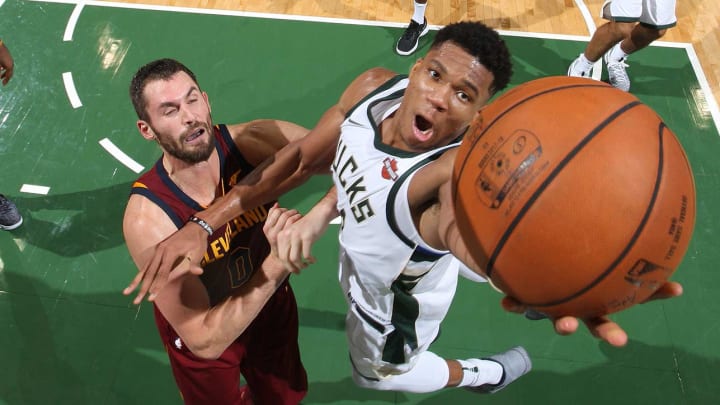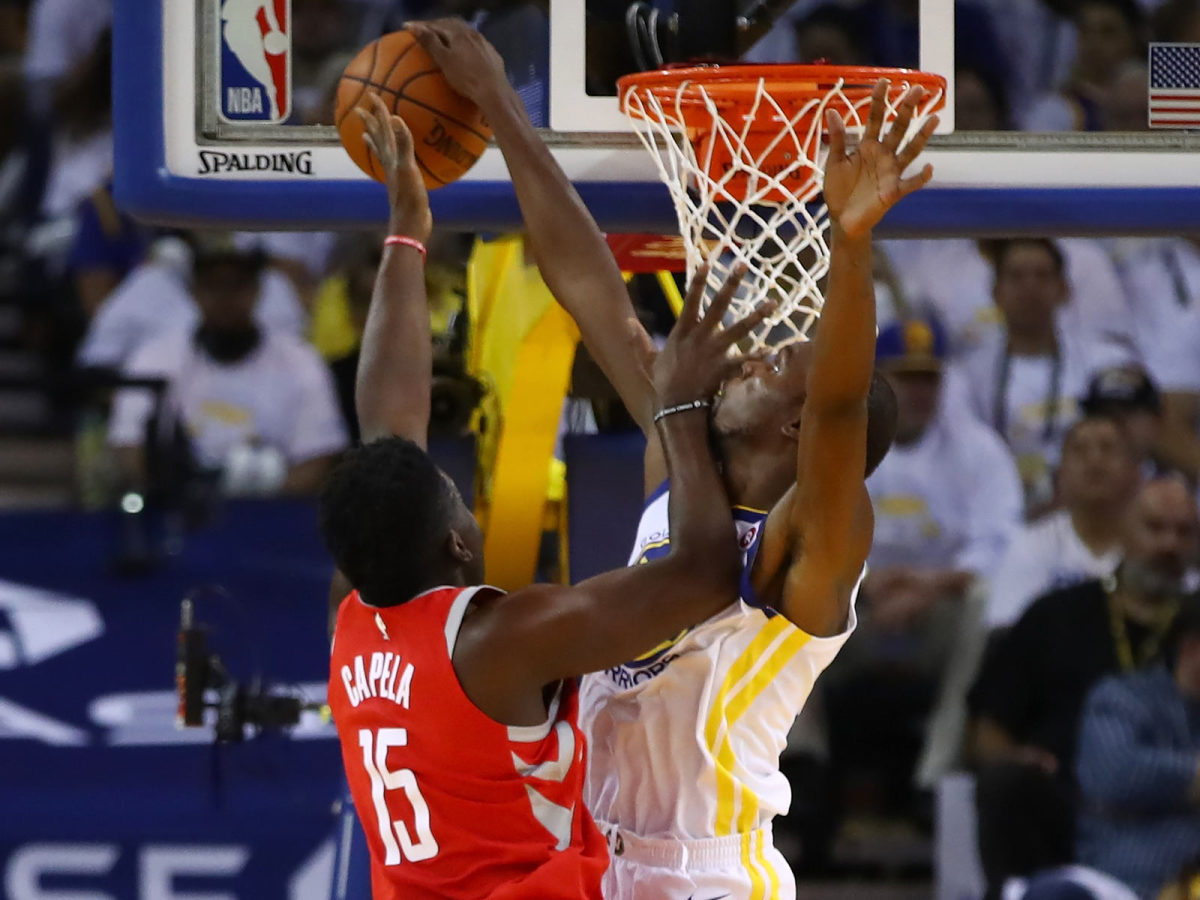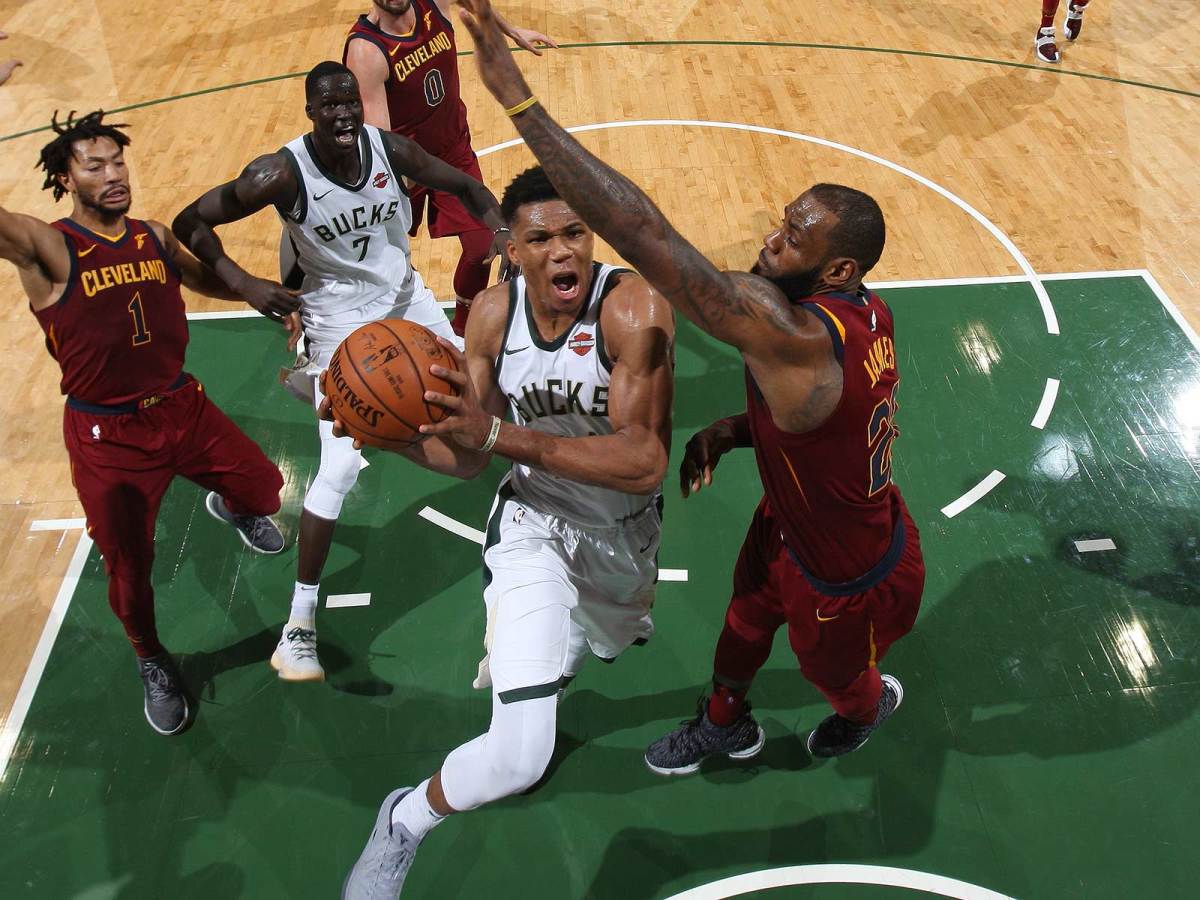The 12 Biggest Surprises of the NBA Season So Far

The first week of the 2017–18 NBA season felt like a lifetime. Contending hopes lived and died. One head coach and three assistants were fired. There were fights. There were loving tributes. There were banked-in buzzer-beaters and Dunk-of-the-Year candidates. The crowd that breathlessly tracks the performance of Lonzo Ball experienced the full range of human emotion. No team has yet played its fourth game.
Given the turbulence, let’s take stock. The standings are hardly important at this stage. What registers are the surprises—those developments that defy our expectations so much as to force reconsideration. Here are the 12 biggest thus far:
• Phoenix losing its first three games by a combined 92 points, followed by Eric Bledsoe's SOS tweet, followed by the firing of Earl Watson. In the span of four days, the Blazers, Lakers, and Clippers tic-tac-toed the Suns into oblivion. Expectations for Phoenix’s season were already incredibly low. Still, the Suns submarined them with three consecutive blowout losses, each as lifeless as the next. Watson’s firing, justifiable and unprecedented, sends some kind of message. It also sends a developing team into limbo, caught between coaches for 79 games of an 82 game schedule.
Bledsoe, the longest-tenured Sun, has apparently had enough:
I Dont wanna be here
— Eric Bledsoe (@EBled2) October 22, 2017
If this tweet is the overture it seems, it could rekindle trade talks with some of Bledsoe’s long-time suitors. Most of Bledsoe’s seven years in the league have been spent on the trade block; when he wasn’t the luxury off the bench the Clippers couldn’t afford, he was the second point guard in a two-point guard system or the veteran out of sync with a rebuilding roster. As such, the Suns have had plenty of opportunities to kick the tires on potential deals. Now they might finally have the real, unfortunate motivation to consummate one: a declaration from Bledsoe himself that shifts his market into overdrive. If the motivation for firing Watson is to get the team’s culture on track, it stands to reason that Phoenix could move quickly to relocate a player as openly dispirited as Bledsoe.
The trouble with moving point guards—especially in-season—is their prevalence. Most teams at this point have at least a solid starter at the position. Those that don’t generally have a high draft pick vesting in the role, else they’re too young to trade big for a 27-year-old with established injury concerns. Others, like the Pelicans, might have the interest but not the assets, even if a Bledsoe deal moves into pennies-on-the-dollar territory. Of the teams that remain, five make good sense: Denver, San Antonio, Milwaukee, Indiana, and Orlando. Consideration of the Nuggets' fit begins with Nikola Jokic, who could take enough playmaking off of Bledsoe’s plate to unleash the active guard as a cutter. This is ideal. Denver would punch up its backcourt defense in the move, and has the right mix of young talent and similar-sized contracts to get in the game.
Here's a Better Plan, Robert Sarver: Sell the Suns
The Spurs may love what they see in Dejounte Murray, but Bledsoe—a more accomplished, complete player suited for San Antonio’s competitive timeline—is right there for the taking. There are two avenues worth exploring: One involves trading Tony Parker, likely with a young player (like Murray or rookie Derrick White) attached, the other would have to wait for months so that recent signees (like Rudy Gay or Patty Mills) could be included. Everything the Spurs have done in recent months points toward trying to maximize Kawhi Leonard’s competitive prime. Trading for Bledsoe continues along those lines, all while giving the Spurs the kind of three-man defensive front to challenge the Warriors and Rockets.
There have been whispers connecting Bledsoe and the Bucks for years, though the emergence of Malcolm Brogdon changes the calculus involved. If all it took to land Bledsoe were Greg Monroe’s expiring contract and a sweetener (rookie D.J. Wilson, who went No. 17 in the draft? Or a protected first-round pick?), Milwaukee should jump at the chance. If the price gets higher, things get tricky. It’s worth exploring the option just for the thought of an ultra-physical Bucks team led by Giannis Antetokounmpo and Bledsoe. The Pacers and Magic probably have longer odds in this race, though both are worth considering as young teams with the motivation to win sooner rather than later. Indiana isn’t the type of franchise to endure a long rebuild, hence their recent moves to acquire mid-career veterans since trading Paul George. Bledsoe, for what it’s worth, is better at every component of basketball than Darren Collison, their current starter. In Orlando’s case, it has been six seasons since the Magic made the playoffs—or even won better than 35 games. Clearly Bledsoe isn’t a guaranteed ticket to the postseason, but he moves Orlando closer than Elfrid Payton would otherwise.
• Toronto’s modernized offense. The Raptors—despite their roster continuity—are hardly recognizable. A team that ranked No. 30 in assists per game last season is up to No. 4 over the first week, spreading the wealth with early passes. What was a reluctant long-range shooting outfit in years past currently ranks fourth in three-point rate, taking essentially the same proportion of their total shots from behind the arc as the Warriors. (Newcomer C.J. Miles, who is cranking 14.6 three-point attempts per 36 minutes of action, might carry that difference by himself.) This is strange. This is spectacular. This is exactly where Toronto needs to go to extract new value from their returning core. We’ll see how things stand when the Raptors aren’t playing against the Bulls or the Embiid-less Sixers, though their concept is reason enough for optimism.

• Kevin Durant’s ascent into a full-fledged rim protector. Consider this: While Durant is on the floor, more than 10% of the opposing team’s two-point attempts end at his hand. This is batty. Already the Warriors had the NBA’s most pliable defense. The last thing the rest of the league needs is for Durant, the most agile seven-footer in basketball, to evolve from challenging shots to ending them entirely.
• Injury blow after injury blow. Gordon Hayward, Jeremy Lin, Chris Paul, Rodney Hood, Miloš Teodosić … we’re not even a full week into the season and already injuries are changing the shape of the league. The context makes each of these cases especially painful. Not only was Hayward’s opening night leg break as gruesome as basketball plays come, but it’s possible he may never be the same player again. In the meantime, his absence derails one of the best teams in the East. Lin, who lost most of the 2016-17 season to injury, ruptured his patellar tendon and will be forced to sit out another year. The footage of Lin’s realization in the moment is painfully raw. Paul’s knee injury appears to be less serious in the grand scheme of things, though it tables the league’s most intriguing team after a single win. At minimum, it alters the course of a hopeful contender. The latest gut punch was Teodosić, whose long-awaited arrival in the NBA was undercut by a plantar fascia injury after two games. And let’s not forget Nicolas Batum, JaMychal Green, Dante Exum…have mercy, basketball gods.
• LeBron James eliminating his only remaining weakness. Over the last several years, the only real comfort for a defender matched up against LeBron was that if they were to foul him on a given possession—assuming James didn’t just power through the attempted foul for an and-one—he might only score one point as opposed to two or three. All the usual small sample size qualifiers apply, but LeBron’s free throw shooting has been aces thus far: 11 of 12 (91.7%) over three games of action. That this is coming from a player with a 74% career average who shot 67.4% from the stripe last season suggests this, like most early trends, will regress in time. If not—and even if LeBron can bump his free throw shooting up into the high 70s—he’ll leave the defenders tasked to guard him with no recourse.
• One Bull punched another Bull in the face so hard his skull fractured. Seems noteworthy.
• Reserves in Memphis and Minnesota holding up their end of the bargain. To varying degrees, the Wolves and Grizzlies faced the same question coming into this season: Are there enough useful players on the bench to, if nothing else, keep a game within reach? The early returns are promising. Nemanja Bjelica has been one of the most consistent Wolves to date, a development that gives much Tom Thibodeau greater flexibility in managing his rotation. Jamal Crawford, while predictably hit-and-miss, has supplied just the kind of shot-making intended by his signing. Some of the best minutes of the Grizzlies’ opening games have come with Mario Chalmers and second-rounder Dillon Brooks. Even Chandler Parsons, who was booed by the Grizzlies’ home crowd last week, has turned around to knock down shots and weather the absence of JaMychal Green. Teams like these don’t need a bench full of productive players. Even a few can make for healthier lineups across the board.
• Jaylen Brown obliterating the learning curve. Betting on the continued scoring success of a player with unreliable handles is a shaky proposition. Brown, to his credit, assuages some of that concern through effort and confidence alone. There is space enough in Boston’s offense to clear Brown a path, and momentum enough in Brown’s game to push him through. No shred of evidence suggested he was capable of this kind of scoring explosion (17.3 points per game on 44.7% shooting from the field), though Brown has shown he’ll keep attacking until opponents make a dedicated effort to stop him.

• A game-breaking turn for Giannis Antetokounmpo. In lieu of the three-point range that still eludes him, Antetokounmpo has resolved instead to double-down on what he already did at an All-NBA level. Dare him to shoot and he’ll drive instead with a head of steam, knocking a defender off their base and then gliding past them for a score. The league has no answer for Giannis because humanity has no answer; no basketball player with his size and length has ever attacked the way he does. Everyone knows that Antetokounmpo wants to get to the paint. Not only does he do it anyway, but he shoots 78.4% from in the lane, overwhelming even the biggest and strongest the league has to offer. Some of the trends on this list will soon disappear. This is real—a fledgling MVP candidacy behind one of basketball’s transcendent talents.
Does Giannis Have a Real Shot at MVP and What Makes Him So Unguardable?
• The Pacers finally taking their name to heart. It is legitimately shocking to see a Nate McMillan team sprinting as relentlessly as any in the league. Indiana promised to run more last season but never really got further than a gallop. This is a different matter altogether. Victor Oladipo is attacking in transition every chance he gets. Darren Collison is pulling up for jumpers before his teammates can even make it downcourt. You know a team is dedicated to a tempo change when it runs off of makes as well as misses, letting the outlet passes fly and catching them on the move. If nothing else: Indiana will put up points.
• Nikola Vucevic, model of efficiency. Without much material difference in his approach, Vucevic has gone from a somewhat empty scorer to one of the league leaders in plus-minus (+54 after three games). Even if this turns out to be an opening week mirage, the vision is convincing enough for the Magic to punk the Cavaliers in their third game of the season.
• At long last, Blake Griffin is a three-point shooter. It’s amazing how long it can take—whether due to their particular roles or some associated mental block—for a player comfortable shooting 20-footers to back up just a few feet beyond the three-point line. Griffin is finally there. After dabbling with the three for the first time in earnest last season, Griffin is launching up 5.5 threes per game and connecting on 54.5%. After two games, he has more three-point makes than Kyle Lowry, Carmelo Anthony, Mike Conley, Kristaps Porzingis, and Kemba Walker. What is a defense to do when Griffin can handle, bully his way through coverage, and now demand the kind of attention that could clear a runway?
